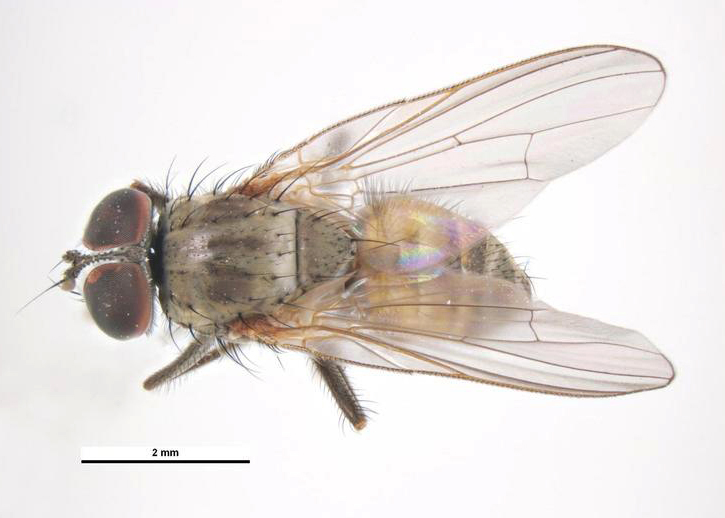Lesser House Flies
Fannia spp.
Identification
- similar in appearance to the house fly, but 2/3 the size (~3/16 inch)
- 3 black stripes are visible on the back; the first two and a half abdominal segments are translucent yellow
- larvae are whitish brown and covered in long protrusions on the back of the body
Nesting Habits
- breed in animal feces, decaying organic material and trash receptacles
- males gather in large numbers and hover in areas with still air that are protected from sunlight
Diet
- larvae feed on animal feces and decaying organic material
Significance
- flies hover around structures in large numbers and can come indoors creating a nuisance
- rarely land on food; not considered a disease vector
IPM Recommendations
- Locate breeding substrate and remove or alter.
- Keep exterior doors closed, install screen doors, or install an automatic door closer.
- Keep screens in good repair.
- Improve sanitation around the structure, if possible.
- Keep dumpsters and trash receptacles at least 50 feet from structures.
- Keep trash receptacles and areas clean.
- Close lids on trash receptacles.
- Exclude fly entry via caulking, weather stripping, door sweeps, etc.
- Properly place light traps to catch flies that come indoors.
- Use a fly swatter.




